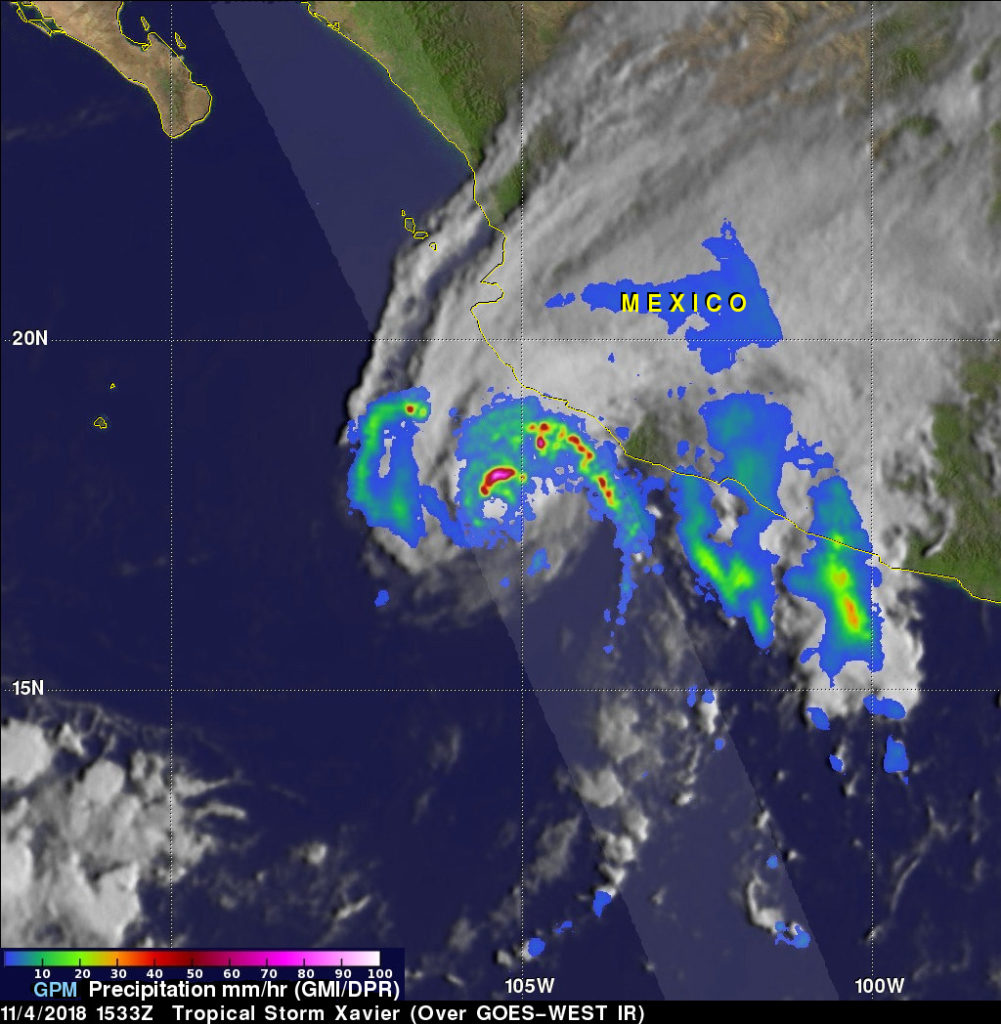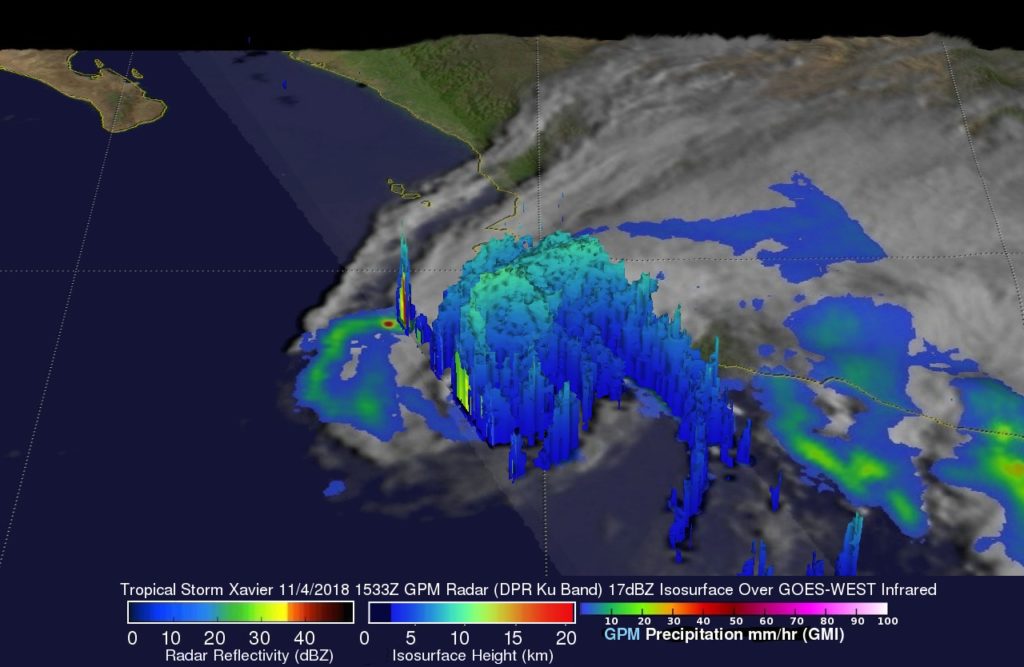Nov. 06, 2018 – Weakening Tropical Storm Xavier Observed By NASA
As Tropical Storm Xavier continued to rain on western Mexico, the Global Precipitation Measurement mission or GPM core satellite analyzed the rate in which rain was falling. The next day, Nov, 6, Xavier had weakened to a remnant low pressure area.

The GPM core observatory satellite passed directly above tropical storm Xavier’s low level center of circulation on November 4, 2018 at 11:33 a.m. EDT (1533 UTC). At that time Xavier was located in the eastern Pacific Ocean less than 150 nautical miles (277.8 km) south of Puerto Vallarta, Mexico. Xavier was experiencing strong southwesterly vertical wind shear.
The low level center of circulation was located well offshore while the tropical storm’s deep convection had been pushed toward Mexico’s coast. GPM’s Dual-Frequency Precipitation Radar (DPR) revealed that rain was falling at over 9.5 inches (241.3 mm) per hour in some of the powerful convective storms that were located to the northeast of Xavier’s low level center of circulation.

At NASA’s Goddard Space Flight Center in Greenbelt, Maryland a 3D image of Xavier’s precipitation structure was created from data collected by the GPM core observatory satellite’s radar (DPR Ku Band). In the 3D image, a view from the south shows that less precipitation was occurring in the southern side of the tropical storm. At the same time the strong convective storms north and northeast of Xavier’s low level center of circulation are shown reaching altitudes of about 6.9 miles (11.1 km). GPM is a joint mission between NASA and the Japan Aerospace Exploration Agency, JAXA.
On November 4, 2018 at 11:33 a.m. EDT (1533 UTC) the GPM or Global Precipitation Measurement Mission core satellite found rain was falling at over 9.5 inches (241.3 mm) per hour in some of the powerful convective storms that were located to the northeast of Xavier’s low level center of circulation. Strong convective storms north and northeast of Xavier’s low level center of circulation are shown reaching altitudes of about 6.9 miles (11.1 km). This animation shows multiple simulated 3D slices through and a simulated flight above tropical storm Xavier using GPM’s radar (DPR Ku Band) reflectivity data. Credit: NASA/JAXA, Hal Pierce
On Nov. 6, Tropical Storm Xavier moved away from Mexico’s coast and weakened into a remnant low pressure area. The National Hurricane Center noted “The remnant low of Tropical Storm Xavier near 19 degrees north latitude and 1089 degrees west longitude at 4 a.m. EDT (1 a.m. PDT) continues to produce minimal gale force winds. Winds will diminish below gale force this morning as the remnant low continues to spin down.”
For updates on Xavier, visit: www.nhc.noaa.gov
By Harold F. Pierce / Rob Gutro
NASA’s Goddard Space Flight Center
